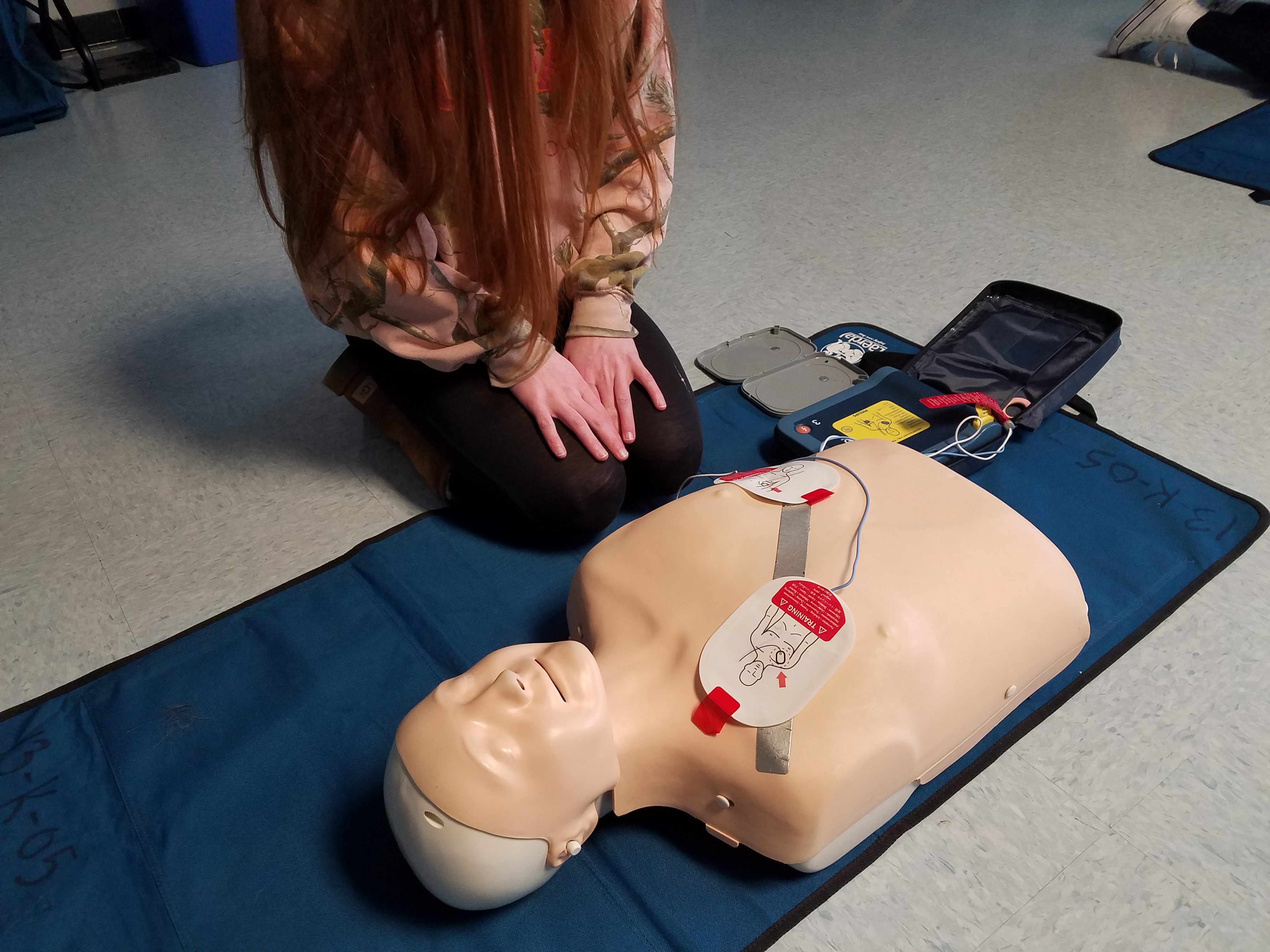Video by Christopher Knoll.
OCEAN CITY – Five minutes can make all the difference. On a previous occasion, Ocean City Fire Capt. Raymond Clark stated that if CPR began within five minutes “the probability of (the victim’s) survival increases exponentially.”
For the third year in a row, Ocean City High School seniors and teachers are receiving training and certification in adult CPR, child CPR and the use of automated external defibrillators (AEDs).
On Feb. 28, it was the turn of Alyssa Morrison’s senior grade dance class to get one final period of instruction before the practical the following day.
Gathered in the Community Activities room were 35 female seniors and two Ocean City Fire Department instructors: Carl Brown and Wyatt Clevenger. On the floor before them were 12 CPR mannequins and AEDs resting on blue mats.
The Ocean City Fire Department has been active in bringing CPR training to the Ocean City community. Besides spending several weeks at the high school, the fire department, starting April 4 and ending on May 21, will be conducting classes at the Ocean City Free Public Library.
Out of Grief Comes Change
Ocean City High School’s commitment to having a plan in response to cardiac distress is part of “Janet’s Law,” named after 11-year-old Janet “Janna” Zelinski of New Jersey who succumbed to cardiac arrest after a cheer leading practice Aug. 10, 2006.
Her family began a movement to have AEDs, which very well might have saved Janna, placed in all Kindergarten to 12th-grade buildings at easy-to-access locations.
What began as a desire to spread awareness resulted in the idea becoming New Jersey law Sept. 21, 2012.
All New Jersey schools must have at least five staff members certified in CPR/AED use, have at least one AED on site, and have an emergency action plan for cardiac arrest on the books.
The Basics
After reviewing what the class had learned on various days in the past two weeks, Brown had the class act out the steps to emergency response and CPR which includes; making sure the scene is safe, shaking the victim and shouting for response, calling (or sending someone) for help, checking for breathing and then beginning CPR.
This was followed by the introduction of the AED.
The class watched a video tutorial, and Brown then re-enacted the steps on what he repeatedly said was a very easy process.
“Just turn the machine on or open the lid. These machines will do all the work for you,” said Brown.
The fireman was not wrong. Upon turning the AED on, voice prompts instructed the student what to do, and those instructions were accompanied by diagrams on the equipment.
The AED, which also works as a diagnostic device, can tell the user when the electrical shock pads were on correctly, what next step to take and always repeated safety precautions.
A Plan of Action
According to the high school’s website (in the section entitled ‘Emergency Plan for Cardiac Arrest’) students and staff responding to a suspected victim of cardiac arrest are instructed to:
• Determine the victim is down and unconscious.
• Determine if the victim is breathing.
• Call the main office and request a ‘Rapid Response Team.’
• Call 911.
• Begin CPR until the AED arrives and continue until EMS arrives.
Ocean City High School began training students three years ago, but it was only last year, Morrison reported, that all seniors and staff were trained and certified. The school website states that the facility had five AEDs onsite.
What Has Changed
The Herald asked Brown what major changes, besides the use of an AED, had taken place with CPR over the years.
“First, pulse checks were eliminated because they were found to be unreliable. Even trained medical professionals could often fail to detect a pulse,” said Brown. Instead, the absence of respiration in a victim is assumed to mean a lack of a pulse.
The different categories of chest compression/breaths ratios were also done away with to avoid confusion, Brown reported.
Now, the standard 30 compressions and two breaths applies to all age groups.
Morrison’s class ran through the CPR and AED procedures almost flawlessly and the students were eager to answer questions posed by Brown. At the end of the instruction period they appeared confident and equal to the challenge of carrying on a beneficial tradition.
To contact Christopher Knoll, email cknoll@cmcherald.com.
Cape May County – All the spouting and you didn’t change the world a single bit. Weeek after week year after year. Not a single thing. Please moderator your authority is nonsense and don’t leave a note I don’t want to…








